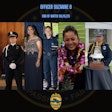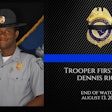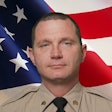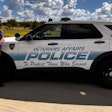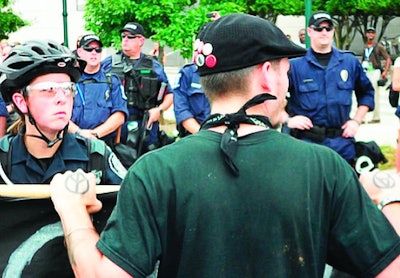 Photo: Kory Flowers
Photo: Kory Flowers
Anarchists as a group have established themselves, particularly in the United States in recent years, as opportunistic purveyors of violence and destruction, utilizing incendiary events such as the shooting of Michael Brown in Ferguson, Mo., amid racial tension between the police department and the black community as springboards for their signature chaos and havoc-laden tactics.
But Ferguson-inspired protests are just the latest events to be co-opted by anarchists. From the American political party conventions held every four years and the G8 Summits staged across the globe, to many lesser-known regional protests, a common and generally violent attendee often rears its ugly head.
While law enforcement typically recognizes anarchists by their trademark all-black clothing and mob stratagem, police are often otherwise unfamiliar with this criminal subculture. In order for law enforcement officers to effectively strategize for, safely interact with, and competently prosecute anarchists, a more in-depth examination is needed.
A Bloody History
The political philosophy of anarchism, purely advocating stateless societies and the notion of anti-authoritarian self-governance, has existed for more than 2,000 years. Tracing its roots to the writings of early anarchists such as William Godwin, Mikhail Bakunin, and others, the authentic philosophy of anarchism has attracted disciples throughout the ages from various industrial nation-states.
Of the multitude of anarchist uprisings and clashes with ruling governments throughout history, one incident is most commonly noted as the birth of modern American anarchism: The Haymarket Affair.
In 1886, before the formation of labor unions to protect common workers' rights, groups had begun to organize and strategize in order to mandate certain universal rights for laborers, including the establishment of the 8-hour workday. May 1, 1886, was set by the fledgling Federation of Organized Trades and Labor Unions in the United States and Canada as the target date by which the group hoped to cement the regulated 8-hour workday. Various affiliated labor unions staged strikes nationwide, including one in Chicago at Haymarket Square on May 3, 1886.
A clash between Chicago anarchist protestors and police forces ensued, and although official recollections of the details vary, the two-day riot left seven police officers and four protestors dead, and eight anarchists indicted for the murders of the officers. The following year, labor unions again demonstrated internationally for workers' rights, and officially trademarked May 1 as "International Workers' Day" in memory of those protestors killed during what became known as "The Haymarket Affair."
FSU
In hindsight, and from a certain skewed perspective, the roots of the modern-day anarchist could appear noble and utilitarian, viewed as a righteous struggle for the common worker versus the heartless capitalistic machine. However, when the typical criminal anarchists today stand face-to-face with helmeted police forces at political conventions or international financial summits armed with urine-filled water guns and surreptitious boxes of broken glass ready for throwing; they are far removed from their roots.
Holding the notion of anarchy is not illegal in and of itself, and the typical law-abiding anarchist utilizes non-violent civil disobedience and passive resistance to further their views. But a nefarious subset of anarchists simply seek to destroy property and often injure police forces. Such people have hijacked the traditional celebration of "May Day" or "International Workers' Day" on May 1 each year, and its historical significance has been lost. It is now a day of mayhem and havoc wreaked by criminal-minded anarchists across the country. Today, proactive urban police departments plan for and execute sophisticated surveillance and monitor such demonstrations in order to mitigate problems.
The criminal-minded anarchist mantra of "FSU" (F__k Shit Up), used as a unifying rallying cry and often seen in anarchist graffiti and signage, testifies to the malevolent intentions of some modern-day anarchists.
Cause Parasites
Modern-day anarchists have targeted many high-profile events in recent years to incite violence and chaos. For example, the "Occupy Wall Street" movement began in Zuccotti Park in New York City's financial district in September 2011, with an easily palatable message against corporate greed and an "us versus them" mentality separating the common worker from the "evil capitalistic one percent." And it served as a springboard for many criminal anarchists nationwide.
Makeshift urban "Occupy" encampments instantly sprang up in metropolitan areas across the country, made up mainly of legitimate frustrated people who had grown discontented with the ever-expanding chasm between the upper-echelons of overpaid CEOs and powerful executives and the working class. However, many of these authentic gripes were overshadowed and even marginalized by criminal anarchists who saw this disenfranchisement as an opportunity to intermingle among the crowds and create chaos and destruction of property.
Occupy protests between crowds and police turned violent and led to property damage and arrests from Oakland, Calif., to New York City. The driving motivator was often criminal anarchists, quite unattached to the sensible gripes of Occupiers, who only sought to spawn violence and dissention.
The Democratic National Convention held in Charlotte, N.C., in September 2012 also drew the anarchist crowd. Because this convention is historically an extremely alluring event for criminal anarchists bent on mayhem and assured international media coverage, layers of federal and state law enforcement planning and forethought began months earlier to ensure the safety of delegates and attendees, and to protect the city. While the week-long convention ended with minimal disturbances because of the stellar police planning, undercover officers intercepted from anarchists urine-filled eggs, acid-filled Christmas ornaments, and water guns containing urine, all meant to be used against the law enforcement security forces throughout the city.
But anarchists don’t limit themselves to national events. On November 19, 2012, in Durham, N.C., a police officer arrested 17-year-old Jesus Huerta and took him into custody. While en route to the police department, Huerta used a concealed handgun to shoot and kill himself in the back of the police cruiser. Public outcry began almost immediately, demanding answers from and questioning the official statements of the Durham Police Department. Within days public demonstrations began under the banner of "Justice for Jesus," with the Huerta family publicly mourning and seeking answers and closure.
Several of the protests in the following months, however, were infiltrated by regional criminal anarchists who, once again, utilized the legitimate anger and frustration of the crowds to incite violence and discord. Masked criminal anarchists attempted to seize a police substation, broke windows, and spray-painted police cruisers, even as Huerta family members publicly called for peace and civility.
Most recently, after a grand jury decided not to indict Ferguson Police Officer Darren Wilson in the shooting of Michael Brown, criminal anarchists have been lurking in the midst of both legitimate peaceful protests and criminal riots throughout Missouri and the rest of the country. As is their common protocol, anarchists have flocked to protests in Ferguson and many other large metropolitan areas in an effort to stir public emotion into criminal action, destruction, and outright pandemonium.
Identifiers
To effectively identify criminal anarchists among authentic protestors and demonstrators, officers need to know their common traits and physical identifiers. The most common symbol utilized by anarchists is the "Anarchy A," which is composed of a capital letter "A" within a circle. Officers may see this image in the form of graffiti, but more often as a body tattoo. Another common criminal anarchist tattoo consists of the letters "ACAB," which stand for All Cops Are Bastards. The black flag of anarchy also advertises the presence of criminal anarchists. The flag may appear as solid black or as a red and black divided rectangle, often hoisted in the air on flag sticks amid protesting crowds.
Typically, criminal anarchists employ a common mode of dress which is part of a tactic frequently called "Black Bloc." In the "Black Bloc" stratagem, throngs of criminal anarchists all dress in black clothing in an effort to appear as a unified assemblage, giving the appearance of solidarity for the particular cause at hand. This tactic is particularly troubling for law enforcement security forces, as no anarchist rioter can be distinguished from another, allowing virtual anonymity while conducting criminal acts as a group.
The more dangerous criminal anarchist rioters can assault police security forces, and then easily blend back into the mob and disappear. Even when viewing video surveillance footage after a criminal riot and attempting to determine the problematic catalysts for the criminality, officers can have difficulty differentiating one anarchist from another. Criminal anarchists also often wear dark-colored bandanas tied loosely around their necks, which can be used as makeshift gas masks to rebuff chemical munitions should they be deployed by police. These facial coverings also conceal the wearer's identity.
Criminal anarchists normally attempt to comingle in genuine protest demonstrations, and are known to wear their "Black Bloc" monochromatic uniform underneath outer clothes, so as not to immediately stand out in the crowd. Officers should also scan for backpacks, which may conceal containers of broken glass, acid-filled projectiles for throwing, or cans of spray paint for vandalism.
Dealing with Anarchists
It is important to understand that not every public protest or demonstration will attract an element of criminal anarchists. The types of demonstrations unlawful anarchists most commonly attend include those against environmentally harmful practices, those against gentrification, and anti-police rallies. When you must deal with criminal anarchists, a few key focal points are crucial.
First of all, know that you will be recorded. Criminal anarchists most often surreptitiously video and audio record their interactions with police forces, in an effort to capture some demonizing interchange or illegal commands by an officer. When speaking with any criminal anarchist, always assume that you are being recorded, and know that even your most benign statement may be video edited and manipulated against you. The more tactically minded anarchists will often bait officers into making emotionally charged statements with confrontational and cantankerous interactions that they will capture on video.
Criminal anarchists will often be students of search and seizure laws, so agencies must ensure that officers clearly understand Fourth Amendment dictums. Law enforcement officers monitoring these volatile protests should also be experts in their local city ordinances which regulate demonstrators' limitations and rules. For instance, in many metropolitan areas, local ordinances dictate the maximum size of protest signs, the use of amplified sound, and the wearing of facial coverings during demonstrations. If you're aware of such ordinances in your jurisdiction you can use them to remove criminal anarchists from the situation on minor infractions.
Perhaps most importantly, police agencies should plan ahead. Agencies should know who may attend these unstable protests so they can somewhat predict challenges before they present themselves. Written tactical plans should dictate law enforcement security force usage and contingency plans. Delineated protest zones and separate cordoned areas for counter-protestors should be clearly defined.
Subversive, criminal-intentioned anarchists are not a new challenge for American police departments when monitoring and providing security for the appropriate, legal exercise of citizens' First Amendment right to free speech during protests and demonstrations. With exhaustive preplanning and adequate event-specific training prior to volatile public demonstrations, officers can safely and competently face and manage encounters with criminal anarchists.
Kory Flowers is a detective on the Greensboro (N.C.) Police Department who has extensive investigative and undercover experience tracking numerous criminal subversive groups, including anarchists and sovereign citizens. Flowers and his partner, Det. Rob Finch, train law enforcement officers nationwide on various extremist groups and criminal factions.








